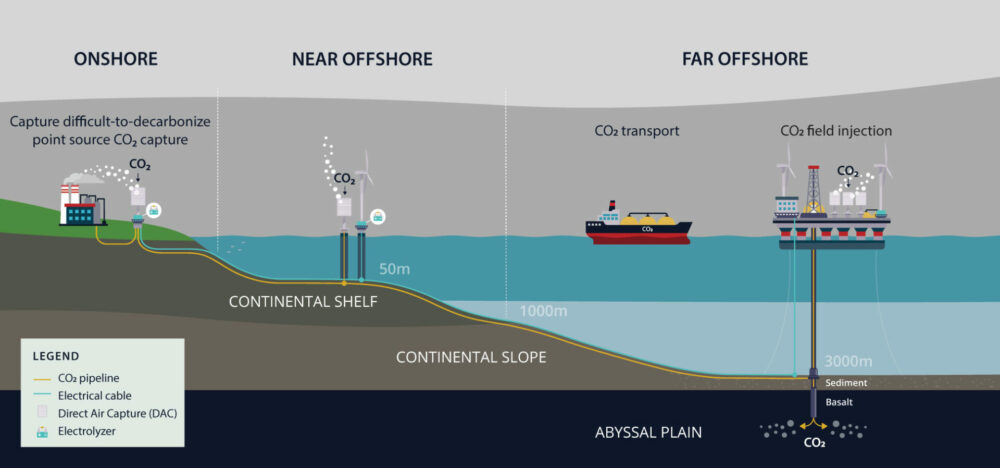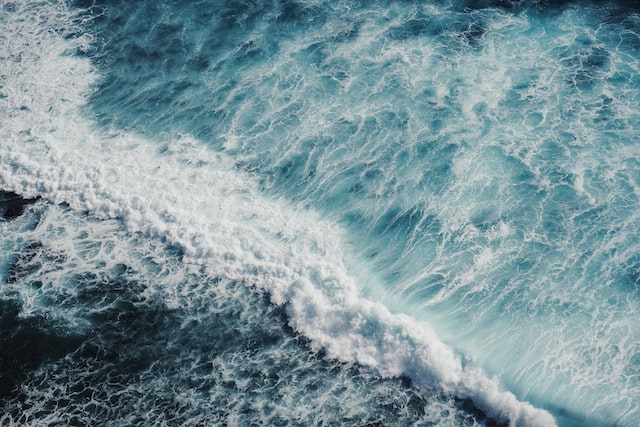Injecting carbon dioxide (CO2) into ocean basalt has almost no risk of triggering any seismic activity such as earthquakes or fault slip according to new research from Solid Carbon, a promising climate change mitigation project for reducing the amount of carbon in the Earth’s atmosphere.
Advanced computer modelling by scientists with the Solid Carbon team shows injecting CO2 under the Cascadia Basin has less than 1 percent chance of causing fault slip.
Solid Carbon, an international research team led by Ocean Networks Canada (ONC), a University of Victoria (UVic) initiative, and funded by the Pacific Institute for Climate Solutions, is investigating how to permanently and safely store CO2 below the ocean floor. The goal is to capture CO2 from the atmosphere and inject it into young (less than 15 million years old) porous basalt rock, such as that found in the Cascadia Basin off the west coast of Canada, where it would interact with minerals, transforming into carbonate rock.
In a recent article in the international journal GeoHazards titled Fault Slip Tendency Analysis for a Deep-Sea Basalt CO2 Injection in the Cascadia Basin, geophysicist Eneanwan Ekpo Johnson and a research team from the project conclude fault-slip potential from carbon sequestration is less than 0.01.
This extremely low risk, they write, holds for a constant injection of up to about 2.5 megatons of CO2 per year over 10 years at the study site. Scaling the technology up to other ocean basalt sites could see about 10 gigatons of CO2 safely injected per year by 2050, which is almost half of the atmospheric reductions necessary to keep the planet habitable for people.

“The modelling results show that the injection wouldn’t cause these faults to slip and therefore won’t cause seismic waves,” says Johnson, who led the study as part of her postdoctoral work at ONC and UVic’s School of Earth and Ocean Sciences (SEOS), and now works for Natural Resources Canada (NRCan).
She says the research team, which included senior scientists from ONC, SEOS, and NRCan, studied the geology of and available data from the Cascadia Basin, including location and orientation of faults as well as stresses in the area. The team determined that the low seismic risk is because the basalt rock is not over-pressured and has a great deal of pore space available to take up the CO2 and is permeable enough to spread the injected carbon around.
The findings are critical for support of continued Solid Carbon testing, says Martin Scherwath, a senior staff scientist with ONC who specializes in seabed dynamics and geological carbon storage.
“The question about the risk of pumping CO2 into the ocean crust is important. People on the west coast can have concerns when they hear that the CO2 will be injected under pressure into an area where there are natural earthquakes due to tectonic stresses. These results show that an additional risk is practically non-existent.”—Martin Scherwath, a senior staff scientist with ONC
Kate Moran, ONC president, Solid Carbon principal investigator and article co-author, says these results reinforce that Solid Carbon offers an unprecedented opportunity to safely remove decades of anthropogenic emissions and help avert the climate crisis, and the next step is to advance to a field demonstration at Cascadia Basin.
Other key findings since the five-year project launched in 2019 is that Solid Carbon’s technology has the global potential to sequester up to 250,000 gigatons of CO2, and that mineralization of CO2 to rock under the seafloor will take around 25 years.
ONC-led projects like Solid Carbon reflect UVic’s commitment to the United Nations Sustainable Development Goals, or UN SDGs. Learn more.









